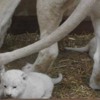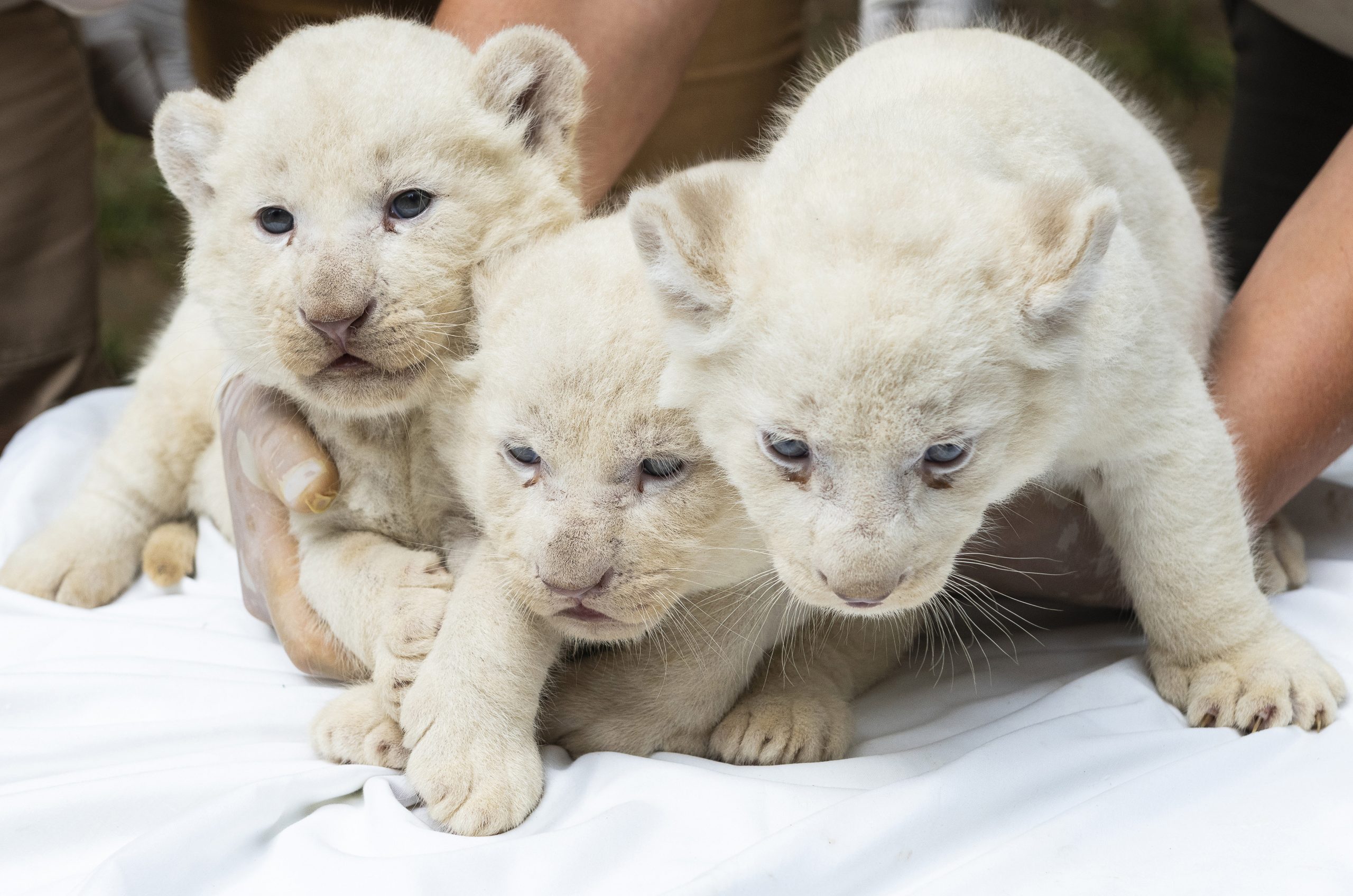Dear friends, we have adopted a white African lion in our zoo.
Here is some information about the white lion from Wikkipedia:
White lion
From Wikipedia, the free encyclopedia
The white lion is occasionally found in wildlife reserves in South Africa and is a rare colour mutation of the Kruger subspecies of lion (Panthera leo krugeri). It has been perpetuated by selective breeding in zoos around the world. White lions are not yet a separate subspecies and they have been said to be indigenous to the Timbavati region of South Africa for centuries, although the earliest recorded sighting in this region was 1938. Regarded as divine by locals,[1] white lions first came to public attention in the 1970s in Chris McBride's book The White Lions of Timbavati. Up until 2009, when the first pride of white lions was reintroduced to the wild, it was widely believed that the white lion could not survive in the wild. It is for this reason that, now, a large part of the population of white lions are in zoos. Another large part, however, are bred in camps, for canned hunting trophies.
White lions are not albinos. Their white colour is caused by a recessive gene known as the color inhibitor gene, distinct from the albinism gene. They vary from blonde through near-white. This coloration, however, does not appear to disadvantage their survival. The white lions of the Global White Lion Protection Trust (GWLPT) have been reintroduced into their natural habitat and have been hunting and breeding successfully without human intervention for a significant amount of time. White lions in South Africa are currently being bred almost exclusively for hunting, but Linda Tucker (the founder of GWLP] and author of The Mystery of the White Lions) and her team are trying to change the South African hunting laws.
Having the recessive gene, gives white lions their unusual colors. A similar gene also produces white tigers. White lions can therefore be selectively bred for zoos, animal shows and wildlife park. Such breeding involves inbreeding of close relatives and can result in inbreeding depression (genetic defects, reduced fertility, and physical defects) although this has not yet been found to have hind-limb paralysis and serious heart defects, indicating a severe level of inbreeding involved in mass-production although they are rare in the wild. People are concerned about the White Lions mating with other lions of other alleles, because of possible extinction of the white lion. However, this is not valid as the offspring will inherit the recessive white gene and therefore make it possible to produce white offspring in a later generation. Some critics maintain that white lions should not be introduced in to the wild because of the inbreeding that has taken place over zoos and breeding camps. However, ethical reintroduction programs such as The Global White Lion Protection Trust have ensured through the use of scientific methodologies that the lions in their program are not inbred.
Attachments
Original Post






